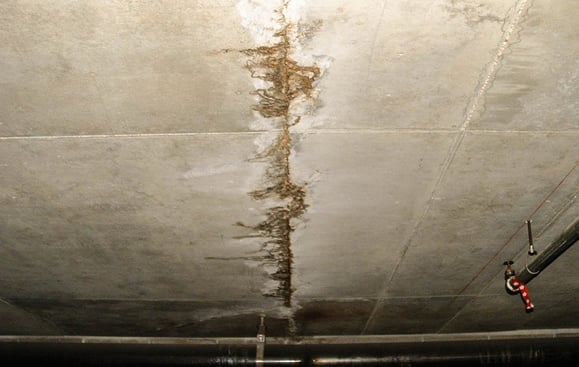Just about every person has their own theory when it comes to Ways to Reduce The Risk Of Fire And Water Damage.

Water offers life, but water intrusion on some components where it's not supposed to be can result in damage as well as hassle. In enhancement, residences with water damage smell old and mildewy.
Water can originate from many sources like hurricanes, floodings, ruptured pipelines, leakages, and drain issues. If you have water damages, it's better to have a working knowledge of safety precautions. Here are a couple of guidelines on just how to handle water damages.
Do Prioritize Residence Insurance Coverage Insurance Coverage
Seasonal water damage can come from floods, seasonal rains, and also wind. There is additionally an occurrence of a sudden flood, whether it came from a defective pipe that unexpectedly bursts into your residence. To safeguard your house, obtain home insurance that covers both acts of God such as natural calamities, and also emergency situations like busted plumbing.
Do Not Neglect to Shut Off Energies
When calamity strikes as well as you're in a flood-prone location, shut off the primary electric circuit. Turning off the power avoids
electrical shocks when water is available in as water acts as a conductor. Don't forget to turn off the primary water line valve as a means to prevent even more damages.
If the floodwaters are obtaining high, maintain your furnishings stable as they can move as well as trigger additional damages.
Do Keep Proactive as well as Heed Weather Informs
Tornado floods can be very unpredictable. If you stay in an area pestered by floods, remain ready and also positive whatsoever times. If you live near a body of water like a creek, lake, or river , listen to the information as well as discharge cautions. Obtain your belongings and vital papers from the ground floor and basement, then placed them in a safe place as well as the greatest possible degree.
Don't Overlook the Roofing System
Your roofing professional ought to take care of the defective gutters or any other indications of damages or weakening. An inspection will avoid water from flowing down your walls and also saturating your ceiling.
Do Take Note Of Little Leakages
There are red flags that can draw your interest and suggest to you some damaged pipes in your home. Indications of red flags in your pipelines consist of gurgling paint, peeling wallpaper, water streaks, water stains, or leaking audios behind the walls. Repair work and also inspect your plumbing repaired before it results in substantial damages to your house, financial resources, and a personal problem.
Don't Panic in Case of a Ruptured Pipe
Timing is essential when it comes to water damage. If a pipeline bursts in your house, right away closed off your major water shutoff to reduce off the resource as well as stop more damages. Call a respectable water damages remediation professional for help.
Water provides life, but water invasion on some components where it's not meant to be can result in damage as well as inconvenience. In addition, houses with water damages scent stuffy and also old.
Seasonal water damage can come from floodings, seasonal rains, as well as wind. Indications of red flags in your pipelines include bubbling paint, peeling wallpaper, water streaks, water stains, or trickling audios behind the wall surfaces. If a pipe bursts in your residence, right away closed off your major water valve to cut off the resource and also avoid more damages.
Some Do's & Don't When Dealing with a Water Damage
DO:
Make sure the water source has been eliminated. Contact a plumber if needed. Turn off circuit breakers supplying electricity to wet areas and unplug any electronics that are on wet carpet or surfaces Remove small furniture items Remove as much excess water as possible by mopping or blotting; Use WHITE towels to blot wet carpeting Wipe water from wooden furniture after removing anything on it Remove and prop up wet upholstery cushions for even drying (check for any bleeding) Pin up curtains or furniture skirts if needed Place aluminum foil, saucers or wood blocks between furniture legs and wet carpet Turn on air conditioning for maximum drying in winter and open windows in the summer Open any drawers and cabinets affected for complete drying but do not force them open Remove any valuable art objects or paintings to a safe, dry place Open any suitcases or luggage that may have been affected to dry, preferably in sunlight Hang any fur or leather goods to dry at room temperature Punch small holes in sagging ceilings to relieve trapped water (don't forget to place pans beneath!); however, if the ceiling is sagging extremely low, stay out of the room and we'll take care of it DO NOT:
Leave wet fabrics in place; dry them as soon as possible Leave books, magazines or any other colored items on wet carpets or floor Use your household vacuum to remove water Use TV's or other electronics/appliances while standing on wet carpets or floors; especially not on wet concrete floors Turn on ceiling fixtures if the ceiling is wet Turn your heat up, unless instructed otherwise

I found that piece on What You Can Do At Home To Prevent Fire And Water Damage when doing research the search engines. In case you appreciated our page if you please make sure you remember to pass it around. I treasure reading our article about Reducing Your Risk Of Water And Fire Damage At Home.